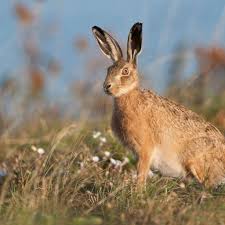Stamp: Young Hare by Albrecht Dürer (Austria 2008)
Young Hare by Albrecht Dürer (Austria 2008)
01 January (Austria ) within release Meine Marke goes into circulation Stamp Young Hare by Albrecht Dürer face value 55 Euro cent
| Stamp Young Hare by Albrecht Dürer in catalogues | |
|---|---|
| Colnect codes: | Col: AT 2008-12/4 |
Stamp is square format.
Also in the issue Meine Marke:
- Mini Sheet - Albrecht Dürer face value 480;
- Stamp - Head of the Lute-Playing Angel by Albrecht Dürer face value 65;
- Stamp - Praying Hands by Albrecht Dürer face value 65;
- Stamp - Self-Portrait by Albrecht Dürer face value 55;
- Stamp - Soldier on Horseback by Albrecht Dürer face value 65;
- Stamp - The Great Piece of Turf by Albrecht Dürer face value 55;
- Stamp - The Rhinoceros by Albrecht Dürer face value 65;
- Stamp - Two Squirrels by Albrecht Dürer face value 55;
- Stamp - Young Hare by Albrecht Dürer face value 55;
- Mini Sheet - Albertina face value 20*55;
|
Data entry completed
46%
|
|
|---|---|
| Stamp Young Hare by Albrecht Dürer in digits | |
| Country: | Austria |
| Date: | 2008-01-01 |
| Emission: | Personalized - Private |
| Format: | Stamp |
| Face Value: | 55 Euro cent |
Stamp Young Hare by Albrecht Dürer it reflects the thematic directions:
Animals are multicellular, eukaryotic organisms of the kingdom Animalia (also called Metazoa). All animals are motile, meaning they can move spontaneously and independently, at some point in their lives. Their body plan eventually becomes fixed as they develop, although some undergo a process of metamorphosis later on in their lives. All animals are heterotrophs: they must ingest other organisms or their products for sustenance.
Art is a diverse range of human activities in creating visual, auditory or performing artifacts (artworks), expressing the author's imaginative or technical skill, intended to be appreciated for their beauty or emotional power. In their most general form these activities include the production of works of art, the criticism of art, the study of the history of art, and the aesthetic dissemination of art. The oldest documented forms of art are visual arts, which include creation of images or objects in fields including painting, sculpture, printmaking, photography, and other visual media. Architecture is often included as one of the visual arts; however, like the decorative arts, or advertising, it involves the creation of objects where the practical considerations of use are essential—in a way that they usually are not in a painting, for example. Music, theatre, film, dance, and other performing arts, as well as literature and other media such as interactive media, are included in a broader definition of art or the arts. Until the 17th century, art referred to any skill or mastery and was not differentiated from crafts or sciences. In modern usage after the 17th century, where aesthetic considerations are paramount, the fine arts are separated and distinguished from acquired skills in general, such as the decorative or applied arts.
Hares and jackrabbits are mammals belonging to the genus Lepus. They are herbivores, and live solitarily or in pairs. They nest in slight depressions called forms, and their young are able to fend for themselves shortly after birth. The genus includes the largest lagomorphs. Most are fast runners with long, powerful hind legs, and large ears to dissipate body heat. Hare species are native to Africa, Eurasia and North America. A hare less than one year old is called a "leveret". A group of hares is called a "husk", a "down", or a "drove".
Painting is a visual art, which is characterized by the practice of applying paint, pigment, color or other medium to a solid surface The medium is commonly applied to the base with a brush, but other implements, such as knives, sponges, and airbrushes, may be used. One who produces paintings is called a painter.
Painting is the practice of applying paint, pigment, color or other medium to a solid surface (support base). The medium is commonly applied to the base with a brush, but other implements, such as knives, sponges, and airbrushes, can be used. Painting is a mode of creative expression, and the forms are numerous. Drawing, gesture (as in gestural painting), composition, narration (as in narrative art), or abstraction (as in abstract art), among other aesthetic modes, may serve to manifest the expressive and conceptual intention of the practitioner. Paintings can be naturalistic and representational (as in a still life or landscape painting), photographic, abstract, narrative, symbolistic (as in Symbolist art), emotive (as in Expressionism), or political in nature (as in Artivism). A portion of the history of painting in both Eastern and Western art is dominated by spiritual motifs and ideas. Examples of this kind of painting range from artwork depicting mythological figures on pottery, to Biblical scenes rendered on the interior walls and ceiling of the Sistine Chapel, to scenes from the life of Buddha or other images of Eastern religious origin. In art, the term painting describes both the act and the result of the action. The support for paintings includes such surfaces as walls, paper, canvas, wood, glass, lacquer, clay, leaf, copper and concrete, and the painting may incorporate multiple other materials including sand, clay, paper, plaster, gold leaf, as well as objects. The term painting is also used outside of art as a common trade among craftsmen and builders.





